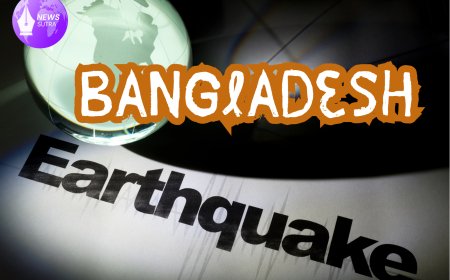Cloudflare Outage Disrupts Major Websites: What Went Wrong
A major outage at Cloudflare on 18 November 2025 disrupted top global websites including ChatGPT and X; here’s the timeline, impact and what went wrong.

On 18 November 2025, the internet’s backbone shuddered. Cloud-infrastructure and cybersecurity giant Cloudflare suffered a widespread outage that knocked numerous top websites and platforms off-line—some for hours. This incident shines a stark light on just how dependent the global digital ecosystem has become on a handful of infrastructure providers.
What happened – timeline & scope
The disruption began early in the day (Eastern Time) when Cloudflare detected “internal service degradation” at around 6:40 a.m. ET. Reuters+1 The root trigger: a significant spike in unusual traffic hitting one of Cloudflare’s services beginning at 11:20 UTC, which in turn caused traffic passing through its network to experience errors. Reuters+1
By the peak of the outage, use of the outage-monitoring tool Downdetector showed nearly 5,000 complaints circa 8 a.m. ET/UTC, although actual impact was likely much broader. Reuters+1 Cloudflare announced the underlying fix by around 9:42 a.m. ET (≈ 2:42 p.m. UK time) with services gradually roaming back to normal. The Washington Post+1
While the core fix was implemented within a few hours, after-effects—slower loads, intermittent errors—persisted for a while.
Which big sites were affected?
Because Cloudflare powers (or secures) a significant portion of the web (estimates show ~20 % of all websites rely on it) The Guardian+1 the outage rippled widely. Some noteworthy effects:
-
ChatGPT (from OpenAI) experienced significant disruptions. The Washington Post+1
-
X (formerly Twitter) reported access issues for thousands of users. Reuters
-
Other platforms impacted included: Grindr, Uber, Canva and regional websites of major organisations. The Washington Post+1
-
In the UK, public entities such as the Financial Conduct Authority and MI5 also reported disruptions. Financial Times
For many users, the error they saw was the generic “500 Internal Server Error” or “please unblock challenges.cloudflare.com” message. The Times of India
Why it matters – impact beyond the outage
This was not just an inconvenience. Several implications jump out:
-
Widespread dependency: One provider’s failure affects a broad web. The incident underscores how a large slice of internet traffic flows through central chokepoints. The Guardian
-
Digital economy at risk: Platforms used for commerce, payments, business operations saw disruption. One retailer even noted that their quarterly earnings webcast was blocked due to the outage. Financial Times
-
User trust & business continuity: For users and companies alike, reliability is assumed. When that assumption breaks, the cost—in user confidence, revenue or brand reputation—is tangible.
-
Regulatory and resilience questions: The incident will fuel scrutiny from regulators about infrastructure resilience, fault-tolerance and concentration risks in the cloud/internet ecosystem.
What caused the outage?
Cloudflare’s summary:
-
The trigger was an unusual spike in traffic to one of their services starting ~11:20 UTC. Reuters+1
-
The spike led to “software crash” in the system traffic-handling multiple services. Financial Times+1
-
Importantly: Cloudflare confirmed the failure was not the result of a cyberattack or malicious activity. The Guardian+1
In short: it appears to have been a self-inflicted infrastructure overload rather than a third-party hack.
What’s next – lessons & corrective action
From both Cloudflare’s side and for users/clients of internet platforms, there are lessons.
Cloudflare’s internal corrective steps will likely include:
-
Strengthening traffic-spike detection thresholds and early mitigation.
-
Improving software robustness in traffic-handling modules to avoid crash under overload.
-
Enhancing monitoring and alerting for edge-service degradation before it cascades.
For platforms and their users, the takeaway includes:
-
Diversification of service providers and avoiding single-point failure in infrastructure setups.
-
Robust contingency planning: even major providers can fail; business continuity plans must assume that.
-
Transparency & communication: rapid updates during outages—users expect it, and it helps limit reputational damage.
Final thoughts
The 18 November 2025 outage of Cloudflare jolts a core assumption of the modern internet: that major-scale providers are reliably invisible. When they fail, the effects are visible—and far reaching. While no malicious hack appears to have caused this event, the ripple effects across apps, business platforms and public services illustrate how fragile even mature-looking systems can be under strain.
For organisations and individuals relying on digital services, the message is clear: infrastructure is real — and when it fails, everything built on top of it inherits the impact.
For the internet as a whole, we may well see increased calls for redundancy, transparency and regulatory oversight of the invisible scaffolding that underpins our online lives.
What's Your Reaction?
 Like
0
Like
0
 Dislike
0
Dislike
0
 Love
0
Love
0
 Funny
0
Funny
0
 Angry
0
Angry
0
 Sad
0
Sad
0
 Wow
0
Wow
0





















